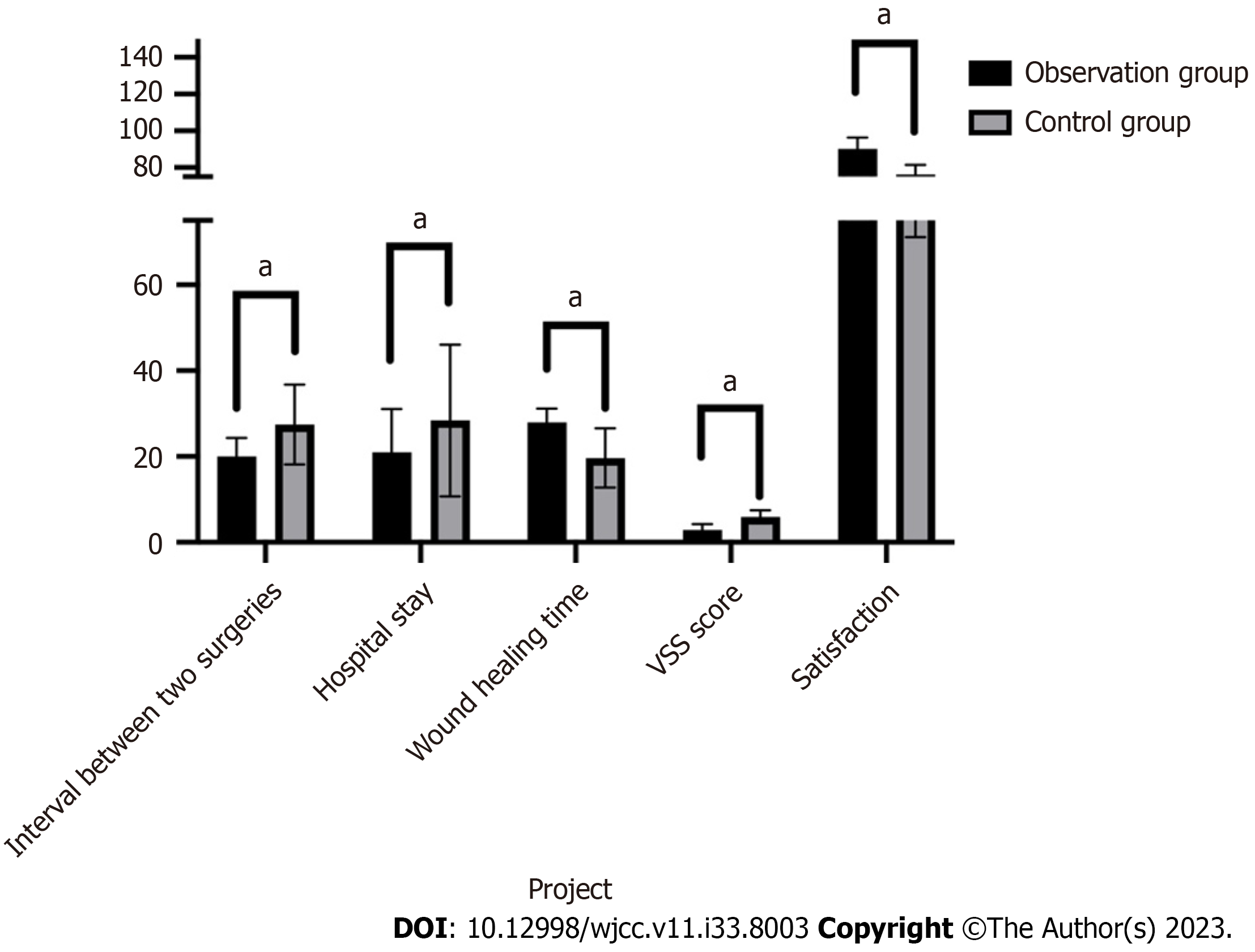Copyright
©The Author(s) 2023.
World J Clin Cases. Nov 26, 2023; 11(33): 8003-8012
Published online Nov 26, 2023. doi: 10.12998/wjcc.v11.i33.8003
Published online Nov 26, 2023. doi: 10.12998/wjcc.v11.i33.8003
Figure 1 Significant differences in the time between surgeries, hospital stay, wound healing time, Vancouver Scar Scale score, and satisfaction between the artificial dermis combined with skin flap transplantation group and the skin flap transplantation group (P < 0.
05).
Figure 2 Typical case in the observation group: A 53-year-old male patient with skin avulsion and necrosis of the left index finger.
A: Physical examination showed a defect in the radial skin and soft tissue of the distal segment of the left index finger, with exposed bones and tendons. No fracture was found on preoperative X-ray examination; B: Left index finger debridement under local anesthesia and double layer artificial dermis (Lando) transplantation; C and D: Two weeks after surgery, the double layer artificial dermis was removed, and the exposed wound of the left index finger tendon bone was fresh and completely covered with granulation tissue; E: Under local anesthesia, left middle finger wound debridement and free forearm thick skin graft transplantation were performed, followed by postoperative pressure bandage; F and G: One week after removal of the compression pack, the skin graft on the affected finger wound survived well and the wound healed completely; H: After surgery, the skin grafting wound on the left index finger was smooth, with slight pigmentation and mild scar formation. The function of the injured finger recovered well. During follow-up, the patient was satisfied with the appearance and functional recovery of the wound, and the final Vancouver Scar Scale score was 2.0.
Figure 3 Typical case in the control group.
A: A 32-year-old male patient with degloving injury of the distal segment of the left index, middle, and ring fingers. Physical examination showed skin and soft tissue defects of the distal segment of the left index, middle, and ring fingers, with exposed bones and tendons. No fractures were found on preoperative X-ray examination; B: Left index and ring finger abdominal pedicle flap under local anesthesia; C: The appearance of the postoperative flap was relatively bulky, and its function was acceptable, but the feeling was not good. During follow-up, the patient was generally satisfied with the appearance and functional recovery of the wound, and the final Vancouver Scar Scale score was 6.0.
- Citation: Wang W, Chen DS, Guo ZD, Yu D, Cao Q, Zhu XW. Artificial dermis combined with skin grafting for the treatment of hand skin and soft tissue defects and exposure of bone and tendon. World J Clin Cases 2023; 11(33): 8003-8012
- URL: https://www.wjgnet.com/2307-8960/full/v11/i33/8003.htm
- DOI: https://dx.doi.org/10.12998/wjcc.v11.i33.8003











